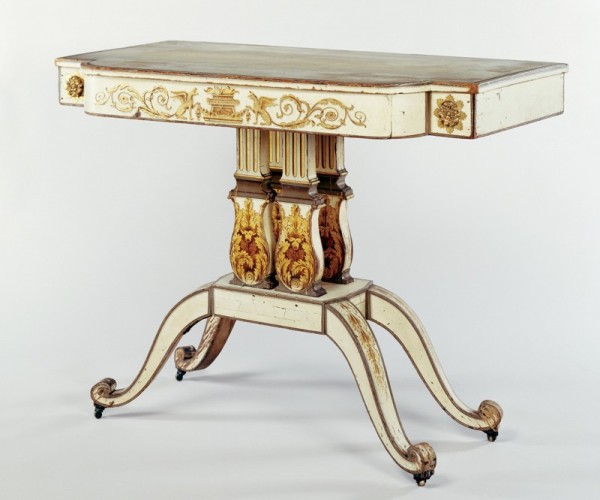
Pier table attributed to Thomas Seymour with decoration by John Penniman, Boston, Massachusetts, 1809. White pine and white ash; brass mounts. H. 34 1/2", W. 48", D. 23". (Courtesy, Nichols House Museum, Boston; photo, David Bohl.)
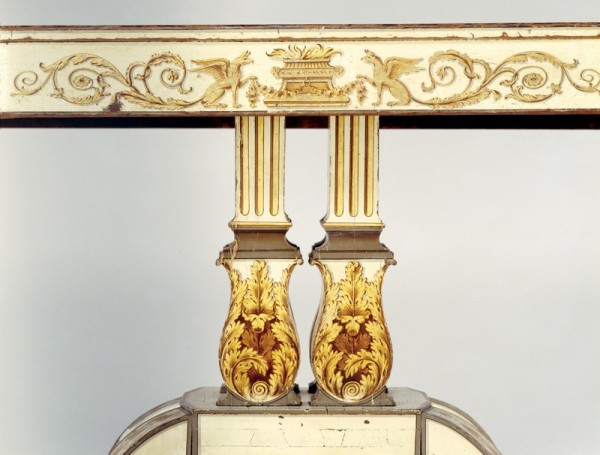
Detail of the pier table in fig. 1. At least two other tables by Thomas Seymour have two pairs of similarly shaped supports.

Taylor Greer, Rose Standish Nichols, Massachusetts, ca. 1912. Watercolor on paper. 4 3/4" x 3 3/8". (Courtesy, Nichols House Museum.) Nichols was forty when she sat for this miniature. She probably acquired the pier table illustrated in fig. 1 after 1930.
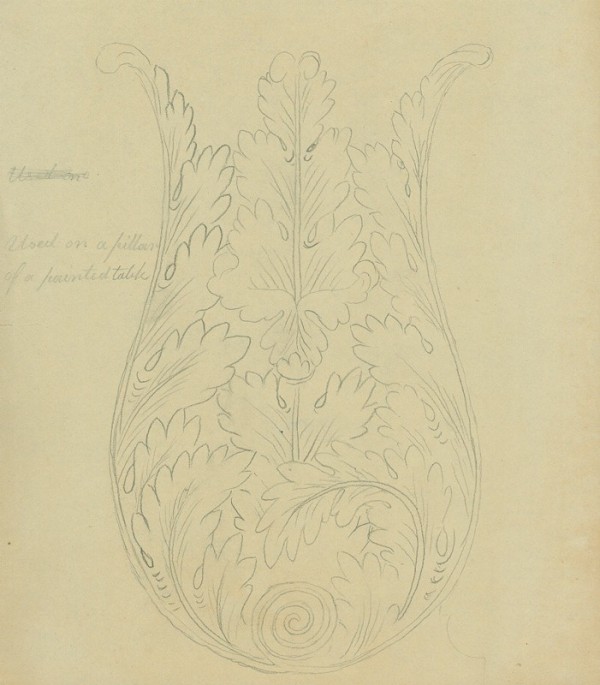
Lyman White, tracing, Boston, Massachusetts, probably before 1835. Graphite on paper. 9 15/16" x 8". (Courtesy, Winterthur Library; Joseph Downs Collection of Manuscripts and Printed Ephemera.) White probably traced one of the supports on the pier table illustrated in fig. 1 when he repainted the top.

Ornament for a Frieze or Table illustrated on pl. 56 in Thomas Sheraton’s The Cabinet-Makers and Uphosterer’s Drawing-Book (1793; reprinted, 1802). (Courtesy, Winterthur Library; Printed Book and Periodical Collection.) The identical design in Thomas Seymour’s copy of the first edition was Penniman’s source for the decoration on the frieze on the pier table illustrated in fig. 1.

Églomisé and gilt glass panel on the frieze of a card table, Baltimore, Maryland, 1805–1815. (Private collection; photo, Robert Mussey Associates.)
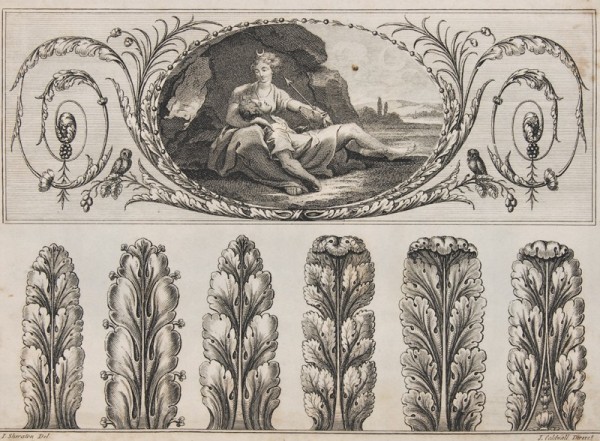
Ornament for a Tablet & Various Leaves illustrated on pl. 2 in Thomas Sheraton’s Cabinet-Makers and Upholsterer’s Drawing Book (1802). (Courtesy, Winterthur Library; Printed Book and Periodical Collection.) Penniman may have used the leaf decoration at the bottom of this plate as inspiration for the decoration on the supports of the pier table illustrated in fig. 1.

Detail of the gilt and glazed leafage on the right front support of the pier table illustrated in fig. 1. (Photo, Robert Mussey Associates.) Penniman built up several layers of transparent oil glaze, beginning with the palest color, with successively darker layers applied at an angle or at right angles to the previous one.

Detail of the gilt and glazed leafage on the right front support of the pier table illustrated in fig. 1. (Photo, Robert Mussey Associates.)

Card table attributed to Thomas Seymour with decoration attributed to John Penniman, Boston, Massachusetts, 1808–1815. Maple and white pine with white pine. H. 30 3/8", W. 35 3/4", D. 18 1/8". (Private collection; photo, Robert Mussey.) This card table is one of the earliest examples with a top that rotates around a threaded iron pivot rod to reveal an inner well for cards and game pieces. The interior wells are repainted with a pale “sky blew.” The upper edges of the rails are faced with thin undyed morocco leather instead of the customary wool baize.

Side chair, Boston, Massachusetts, 1808–1815. Mahogany. H. 20 3/4", W. 19", D. 25 3/8". (Courtesy, Winterthur Museum.)

Detail of the painted decoration on the right front leg of the card table illustrated in fig. 10.
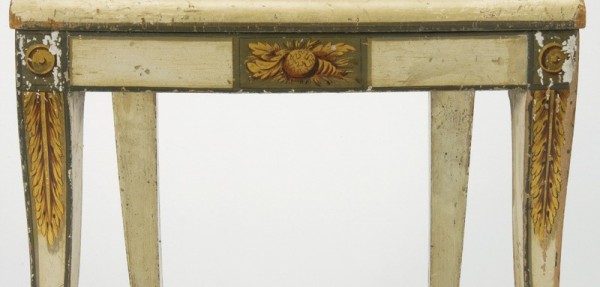
Detail of the decoration on the front legs and seat rail of the side chair illustrated in fig. 11. (Courtesy, Winterthur Museum.) The decoration is not as refined as that on the pier table illustrated in fig. 1. Its incorporation of pale gray shadowing, rounded leaf tips, faux reeding, and several tints of transparent brown glaze over gold-leaf designs suggest that the work is by Penniman or one of his apprentices or 13journeymen.

Detail of the center panel on the front rail of the card table illustrated in fig. 10.
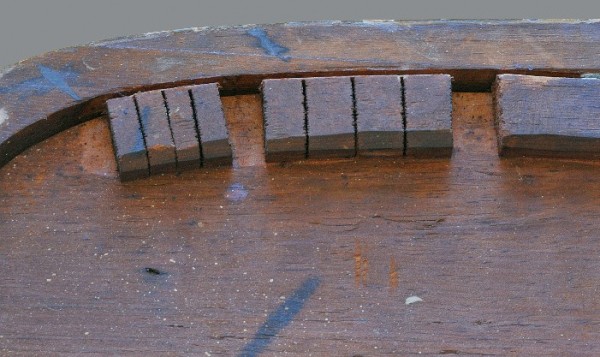
Detail of the kerfed and bent glue blocks on the underside of the card table illustrated in fig. 10.
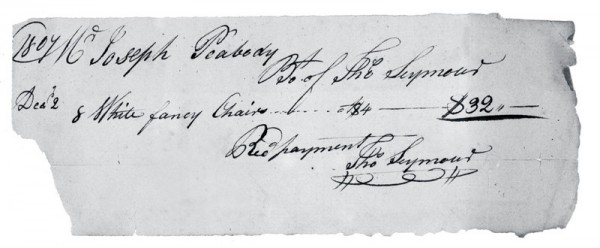
Joseph Peabody’s receipt for white fancy chairs from Thomas Seymour, Boston, Massachusetts, 1807. (Private collection; photo, Robert Mussey Associates.) Peabody was a successful Salem ship captain who became a merchant.
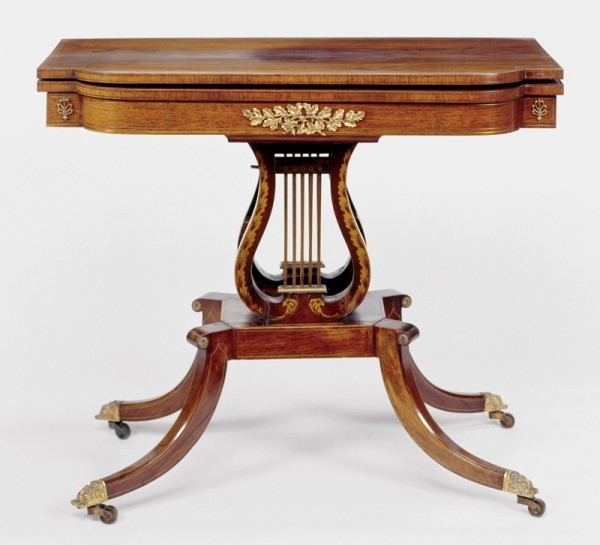
Card table attributed to Thomas Seymour with decoration attributed to John Penniman, Boston, Massachusetts, 1810–1815. Rosewood and rosewood veneer with white pine, birch, ash, and mahogany; brass mounts, stringing inlays, and moldings. H. 29 3/4", W. 36", D. 17 9/16". (Courtesy, Historic New England; photo, David Bohl.)
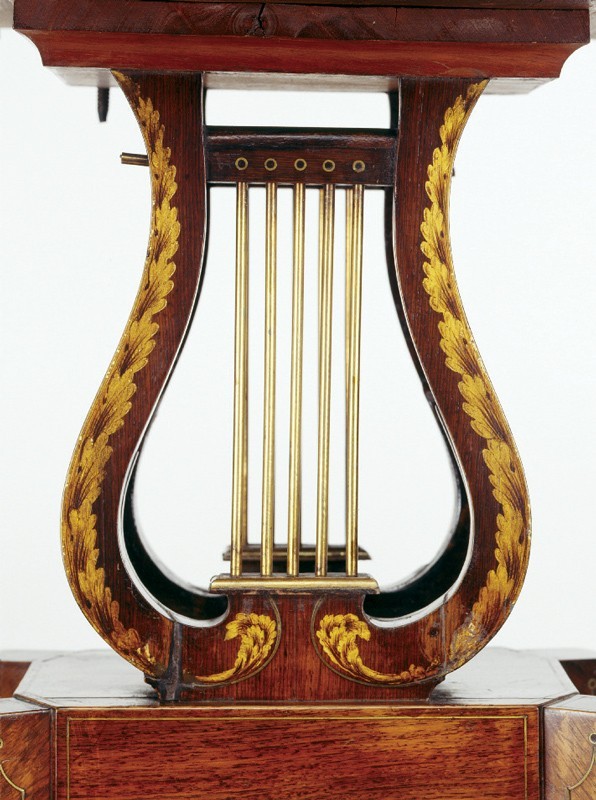
Detail of the lyre support of the card table illustrated in fig. 17.
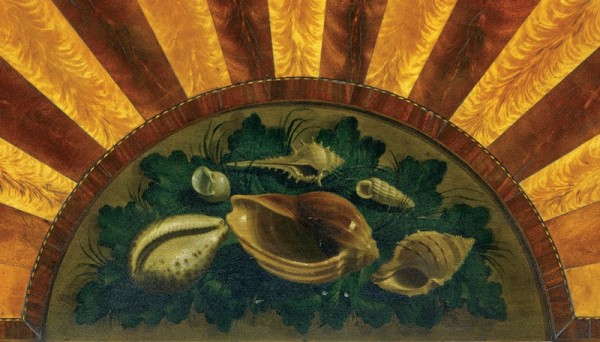
Detail of the painted decoration on the top of a commode chest, Boston, Massachusetts, 1809. (Courtesy, Museum of Fine Arts, Boston, the M. and M. Karolik Collection of Eighteenth-Century American Arts, 23.19.)
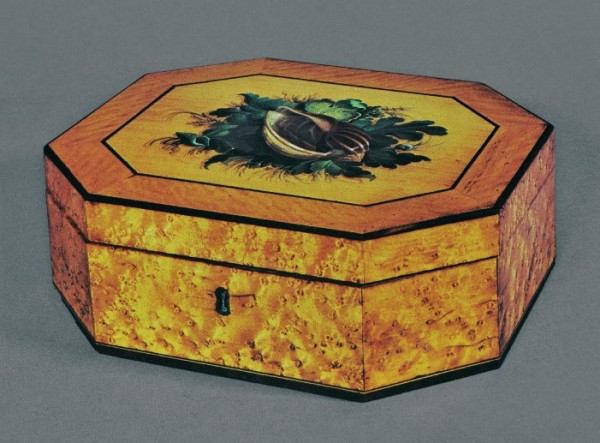
Workbox attributed to Thomas Seymour with decoration by John Penniman, Boston, Massachusetts, 1808–1814. Satinwood and bird’s-eye maple veneer, with mahogany and satinwood. H. 3 1/2", W. 8", D. 10 5/8". (Private collection.)
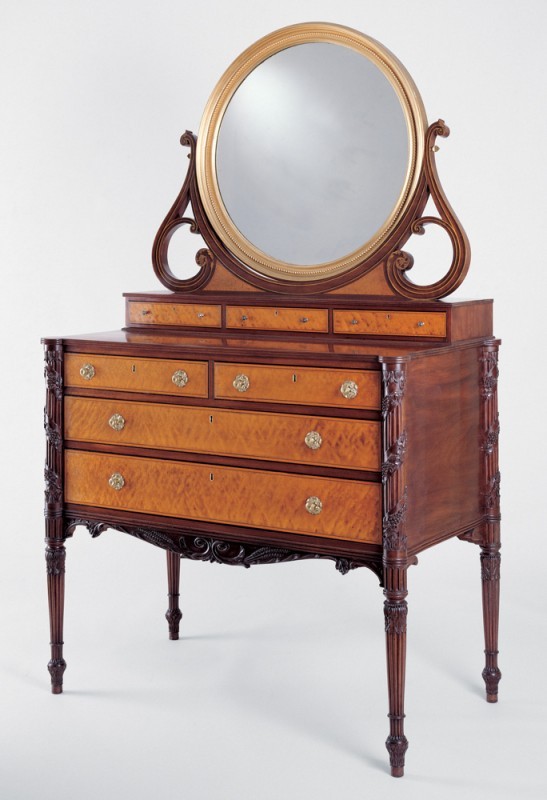
Dressing table attributed to Thomas Seymour with decoration attributed to John Penniman, Boston, Massachusetts, 1808–1814. Mahogany, bird’s-eye maple and satinwood veneers, with white pine, mahogany, ash, and soft maple. H. 73", W. 45", D. 25". (Courtesy, Peabody Essex Museum; photo, Gavin Ashworth.) The table reputedly descended from Elizabeth Derby (West) of Salem.
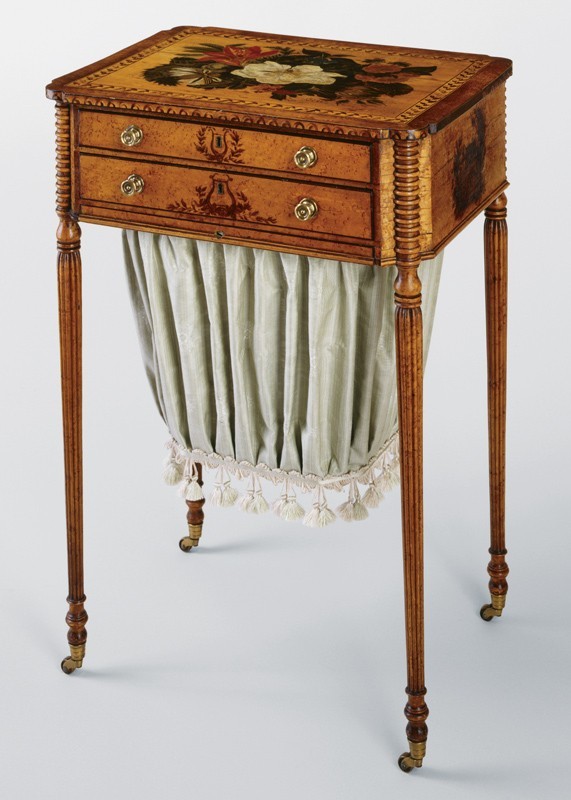
Worktable attributed to Thomas Seymour with top decoration attributed to John Penniman, Boston, Massachusetts, 1808–1814. Maple and bird’s-eye maple veneer, with eastern white pine and cherry. H. 29", W. 20 1/2", D. 15 1/4". (Private collection; photo, David Bohl.) The decoration of the drawer fronts and side rails appears to be by a schoolgirl. This table is one of five with similar floral decoration on the top.
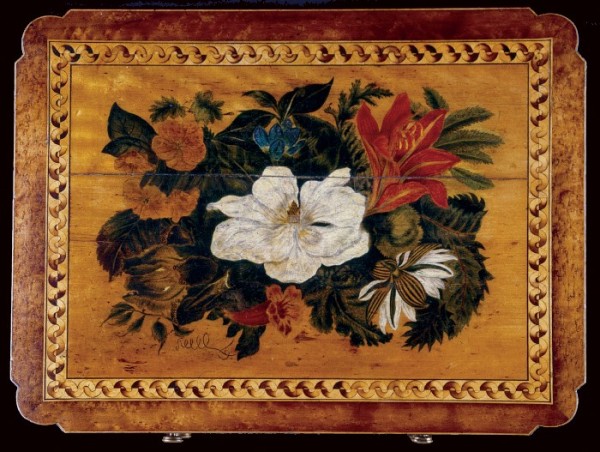
Detail of the top of the worktable illustrated in fig. 22. (Private collection; photo, Robert Mussey.)
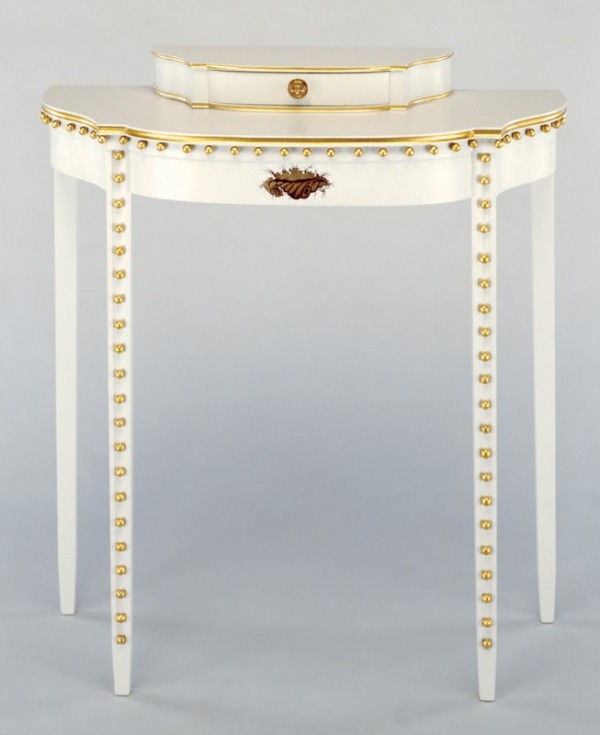
Dressing table, Boston, Massachusetts, 1808–1815. Soft maple with eastern white pine. Dimensions not recorded. (Private collection; photo, David Bohl.)
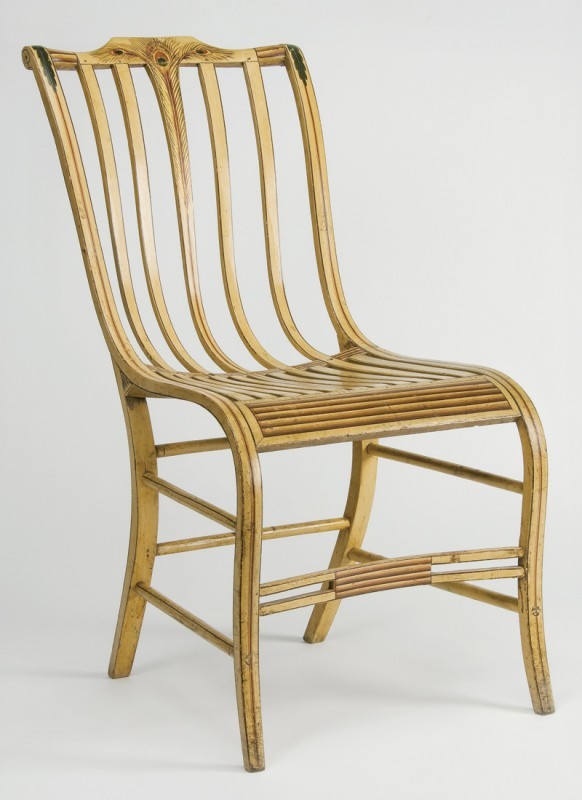
Side chair from the shop of Samuel Gragg with decoration attributed to John Penniman, Boston, Massachusetts, 1808–1812. Birch, white oak, and beech. H. 34 3/8", W. 18 1/8", D. 25 3/8". (Courtesy, Winterthur Museum.) The chair is branded “S.GRAGG / BOSTON” under the front rail and “Patent” under the back rail. Gragg and John Penniman both leased space in Thomas Seymour’s Boston furniture warehouse in 1809.
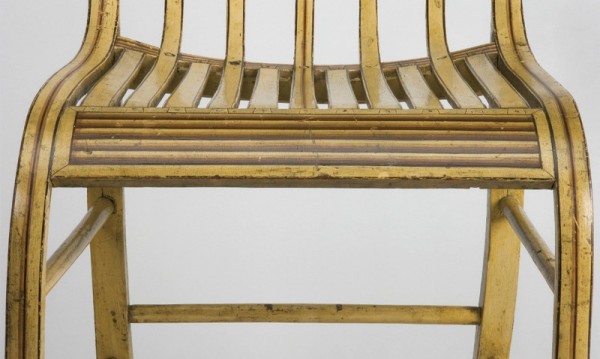
Detail of the decoration on the front legs and seat rail of the side chair illustrated in fig. 25. The use of faux-fluted panels with “mitered” corners, four colors of sienna and umber brown glazes, and faux-shadowing from the upper left resemble Penniman’s work on the pier table illustrated in figs. 1, 2, and 8.
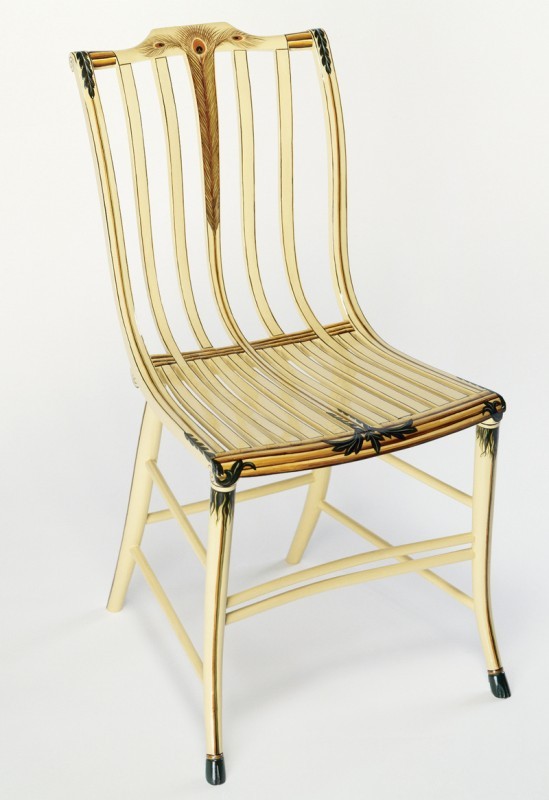
Side chair from the shop of Samuel Gragg, Boston, Massachusetts, 1808–1812. White oak with unidentified woods. Dimensions not recorded. (Private collection; photo, Robert Mussey Associates.) The chair is branded “S.GRAGG / BOSTON” under the front rail. It has been repainted to match evidence from pigment analysis and microscopy of related chairs.
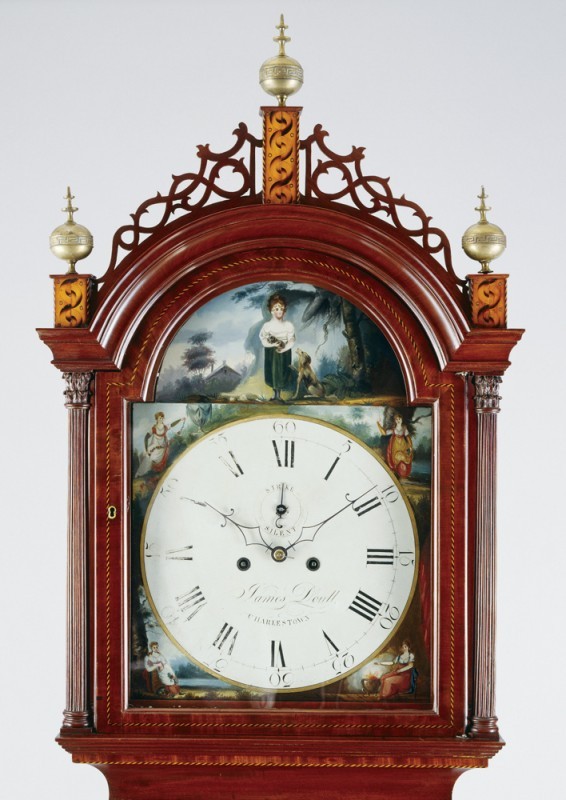
Hood of a clock attributed to Thomas Seymour with decoration attributed to John Penniman, Boston, Massachusetts, 1809-1812. Mahogany, bird’s-eye maple, and mahogany veneers, with white pine. H. 111 3/4", W. 22 1/4", D. 9 7/8". (Courtesy, Metropolitan Museum of Art; photo, Peabody Essex Museum.) The movement is by Scottish immigrant clock maker James Doull. He worked for Aaron Willard from 1807 to 1808 before establishing his own shop in Charlestown in 1809. The brass finials are replaced.
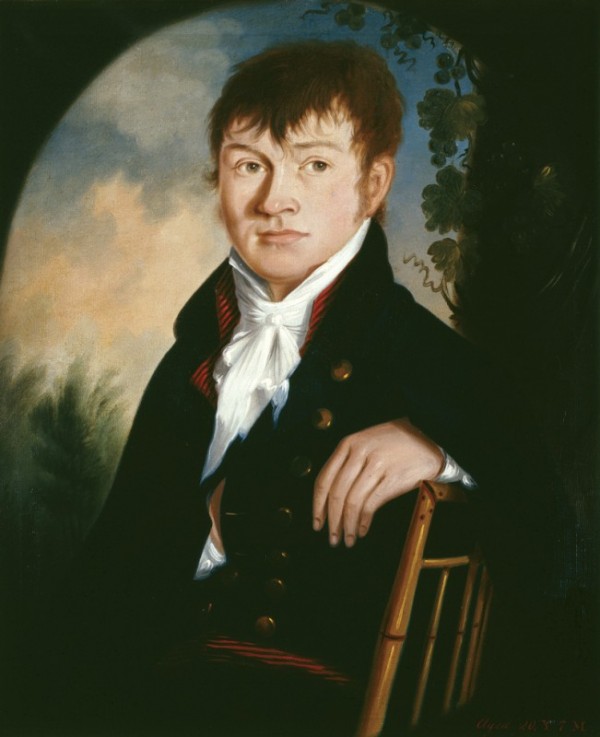
John Penniman, Aaron Willard Jr., Boston, Massachusetts, 1804. Oil on canvas. 28" x 23". (Willard Clock Museum; photo, Gavin Ashworth.) Willard became a clockmaker like his father, Aaron Sr. Penniman painted at least six members of Willard’s extended family between 1804 and 1810. Although the artist’s shading of the face and hands displays subtle gradation, the background foliage is similar to that on Penniman’s furniture painting.
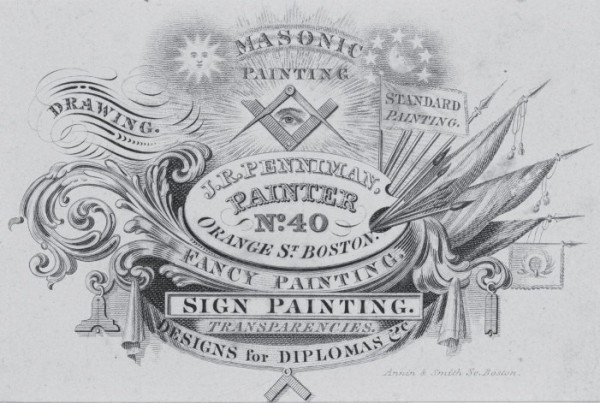
Trade card of John Penniman, Boston, Massachusetts, 1822. Engraving on paper. 3" x 4". (Courtesy, American Antiquarian Society.) William B. Annin and George Girdler Smith based this engraving on a painted design by Penniman.
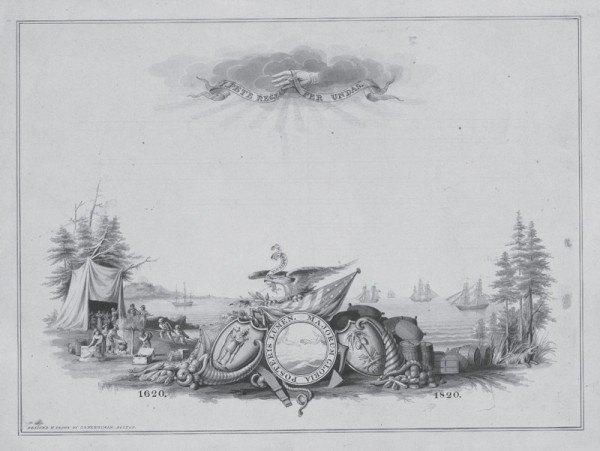
John Penniman, preparatory painting for a membership certificate for the New England Society for South Carolina, Boston, Massachusetts, 1820. Pen, ink, and wash on paper. 11 5/8" x 15 5/8". (Courtesy, American Antiquarian Society.) The painting is inscribed at the lower left “Design’d & Drawn by J. R. Penniman. Boston.” Much of Penniman’s known work between 1815 and 1830 consists of preparatory drawings and paintings for Boston’s publishing industry.
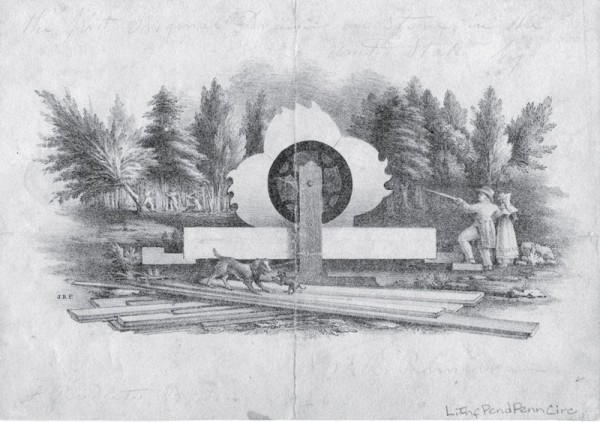
John Penniman, Circular Saw, Boston, Massachusetts, 1826. Lithograph on paper. 3 1/2" x 7". (Courtesy, American Antiquarian Society.) The lithograph is inscribed “the first original Drawing on Stone, in the United States by / J. Pendleton Boston J. R. Penniman / 1826.” The earliest documented lithograph in the United States was done in 1819.
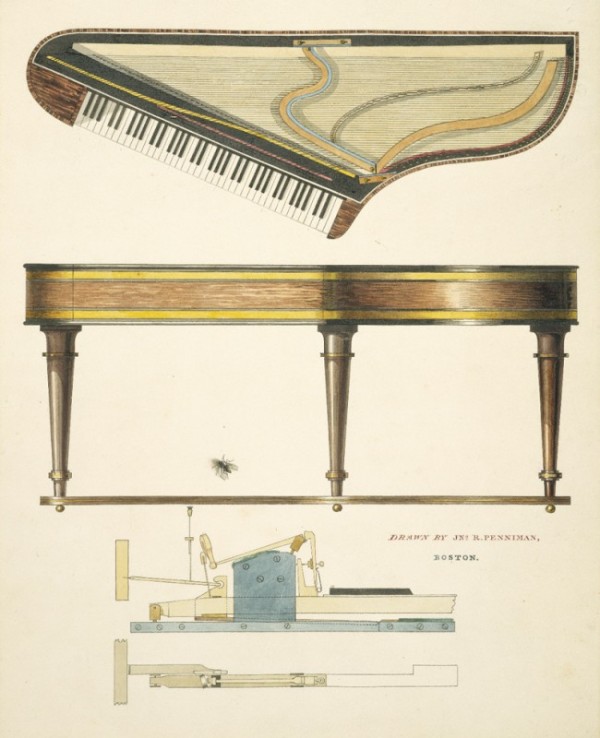
John Penniman, Pianoforte in the Shape of a Bentside Piano, Boston, Massachusetts, 1829–1834. Watercolor on paper. 17" x 12". (Courtesy, Museum of Fine Arts, Boston.) The painting is inscribed “Drawn by Jn.o R. Penniman.” He may have painted the watercolor to accompany a patent application by Boston pianoforte maker Alpheus Babcock. The fly is a reference to Mary Howitt’s popular poem “The Spider and the Fly,” published in 1829.
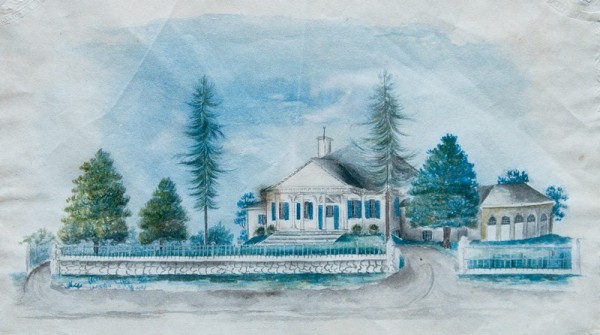
John Penniman, Unquety House, Milton, Massachusetts, 1827. Watercolor on embossed French writing paper. 7 1/2" x 9 1/4". (Courtesy, Milton Historical Society; photo, Robert Mussey.) Penniman’s name is written on the reverse.
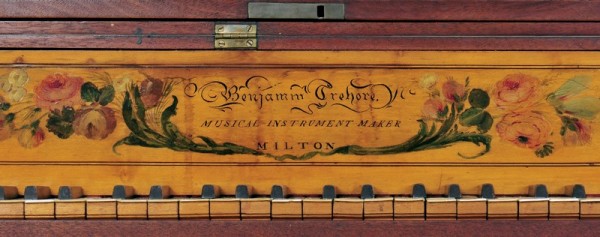
Detail of a name board on a pianoforte by Benjamin Crehore with decoration attributed to John Penniman, Milton, Massachusetts, 1815–1830. (Private collection; photo, Robert Mussey.)
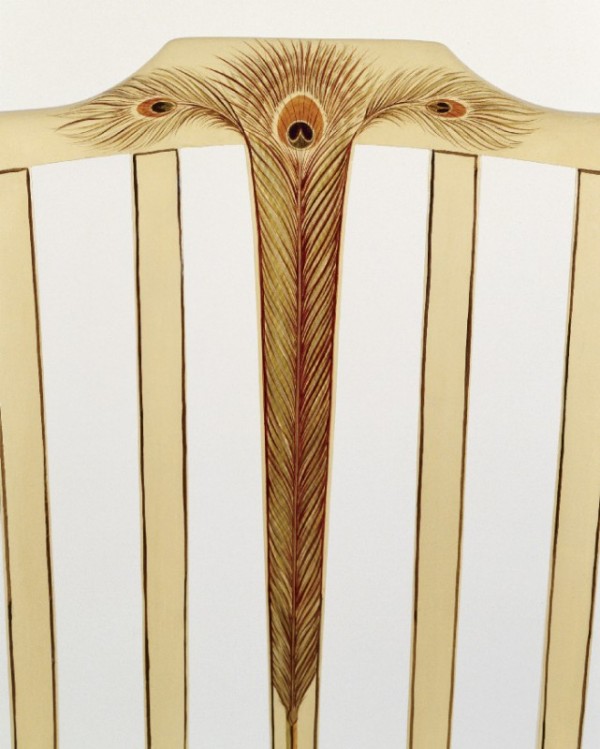
Detail of the painted peacock feathers on the back of a side chair from the shop of Samuel Gragg. (Private collection; photo, David Bohl.)
